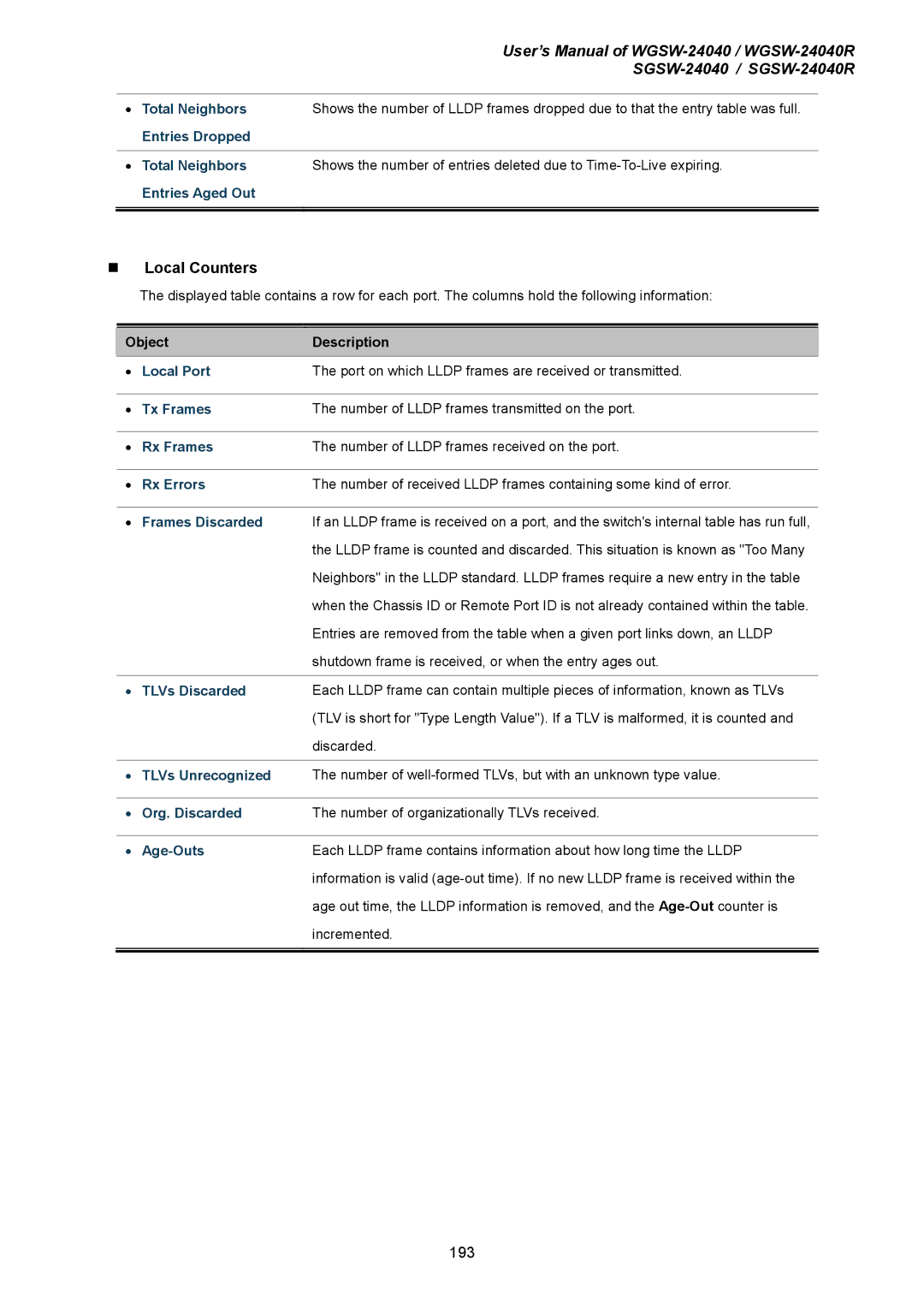|
| User’s Manual of | |
|
| ||
|
|
|
|
• | Total Neighbors | Shows the number of LLDP frames dropped due to that the entry table was full. | |
| Entries Dropped |
|
|
|
|
|
|
• | Total Neighbors | Shows the number of entries deleted due to | |
| Entries Aged Out |
|
|
|
|
|
|
|
|
|
|
| Local Counters |
| |
|
| The displayed table contains a row for each port. The columns hold the following information: | |
|
|
| |
|
|
|
|
| Object | Description | |
| • | Local Port | The port on which LLDP frames are received or transmitted. |
|
|
|
|
| • | Tx Frames | The number of LLDP frames transmitted on the port. |
|
|
|
|
| • | Rx Frames | The number of LLDP frames received on the port. |
|
|
|
|
| • | Rx Errors | The number of received LLDP frames containing some kind of error. |
|
|
|
|
| • | Frames Discarded | If an LLDP frame is received on a port, and the switch's internal table has run full, |
|
|
| the LLDP frame is counted and discarded. This situation is known as "Too Many |
|
|
| Neighbors" in the LLDP standard. LLDP frames require a new entry in the table |
|
|
| when the Chassis ID or Remote Port ID is not already contained within the table. |
|
|
| Entries are removed from the table when a given port links down, an LLDP |
|
|
| shutdown frame is received, or when the entry ages out. |
|
|
|
|
| • | TLVs Discarded | Each LLDP frame can contain multiple pieces of information, known as TLVs |
|
|
| (TLV is short for "Type Length Value"). If a TLV is malformed, it is counted and |
|
|
| discarded. |
•TLVs Unrecognized The number of
• | Org. Discarded | The number of organizationally TLVs received. |
|
|
|
• |
| Each LLDP frame contains information about how long time the LLDP |
|
| information is valid |
|
| age out time, the LLDP information is removed, and the |
|
| incremented. |
|
|
|
|
|
|
193
